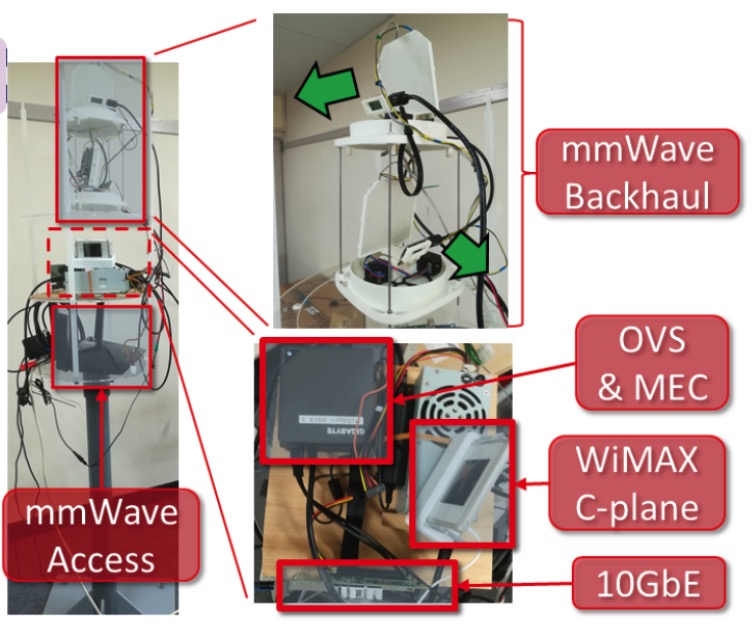5Gミリ波エッジクラウドの概念実証
近年、急増するモバイルトラヒック量に対応できるとして、ミリ波スモールセル基地局による高密度化を用いた超広帯域通信が大きな注目を集めています。 ミリ波アクセスをフル活用する方法として、光ファイバーのような超広帯域バックホールを設置することが考えられますが、それでは大きなコストがかかります。それゆえ、ミリ波メッシュネットワークがミリ波オーバーレイセルラネットワークにおけるコスト面で有効なバックホールアーキテクチャとして期待されているいます。 Owing to its wide bandwidth and flexibility in link connection via beam steering and multi-hop relay, mmWave meshed network is furthermore suitable for dynamic construction of backhauling in adaptation to change of user traffic’s distribution via adaptive allocation of backhaul resources of densely co-located users (UE). On the other hand, as UE nowadays wants to experience services everywhere without disruption even when moving, it is desirable that UE-specific multimedia contents are located as close as possible to the UE via Multi- access Edge Computing (MEC) technology. Covering all the above requirements, we construct a real UE- centric edge content delivery system in which content server is re-located in adaptation to UE’s context information e.g. location, via dynamic routing over mmWave meshed backhaul network, enabled by Software Defined Network (SDN) technology. We call the system mmWave edge cloud. Using our developed WiGig device based testbed, outdoor experiment campaign is conducted in the Tokyo Tech university campus. Fig.1. shows the abstract of mmWave edge cloud. The testbed is composed of four mesh nodes PC attaching mmWave access, mmWave backhaul and WiMax router.

Fig.1 mmWave Edge Cloud
A picture of the actual node is shown in Fig.2. The access and backhaul confirm to the IEEE 802.11ad standard at 60Hz band and can achieve Gbps communication speed. The nodes have server virtualization engine so that virtualized server can be deployed at any edge nodes flexibly. In addition, there are SDN controller and orchestrator outside the LAN, and context information is collected from UE, and based on it, commands such as backhaul link formation and virtualized server migration are sent to nodes using the WiMax channel and executed automatically. As a result, the server is always deployed at a node close to UE, so that user can experience high-speed and low-latency services that make full use of mmWave access performance. Table 1 shows a comparison of the latency between patterns without MEC and with MEC.

Fig.2 mmWave Mesh Node
Table 1 Latency of w/o and w/ MEC

